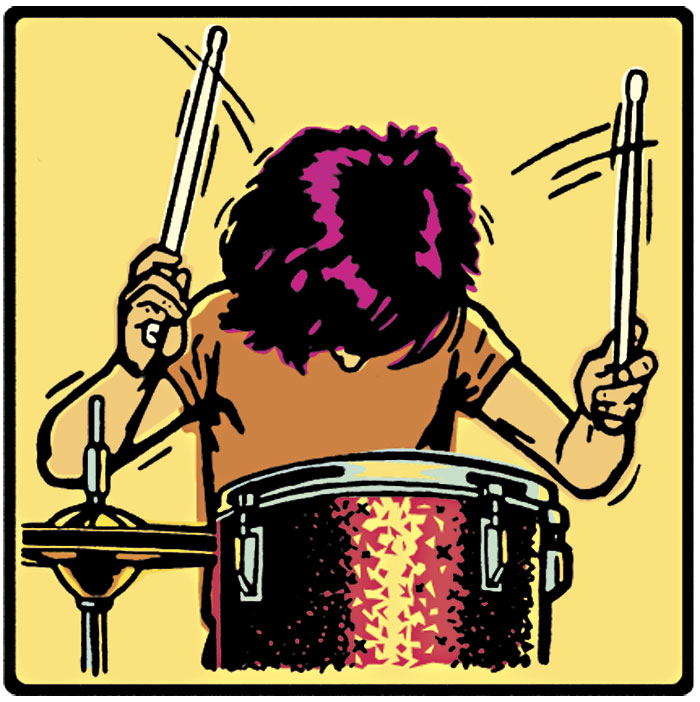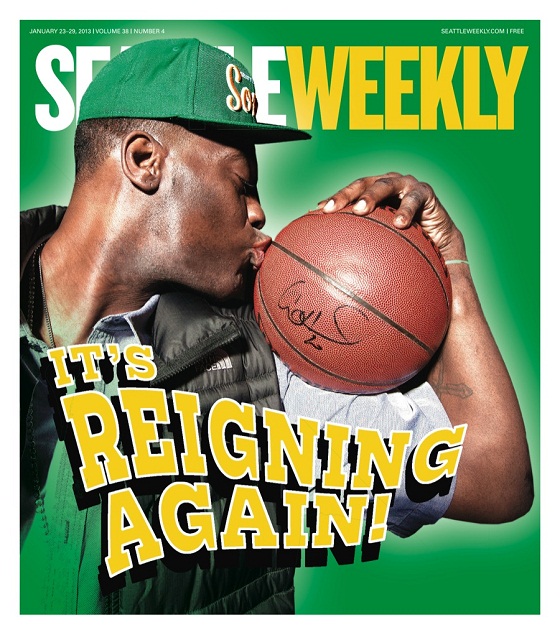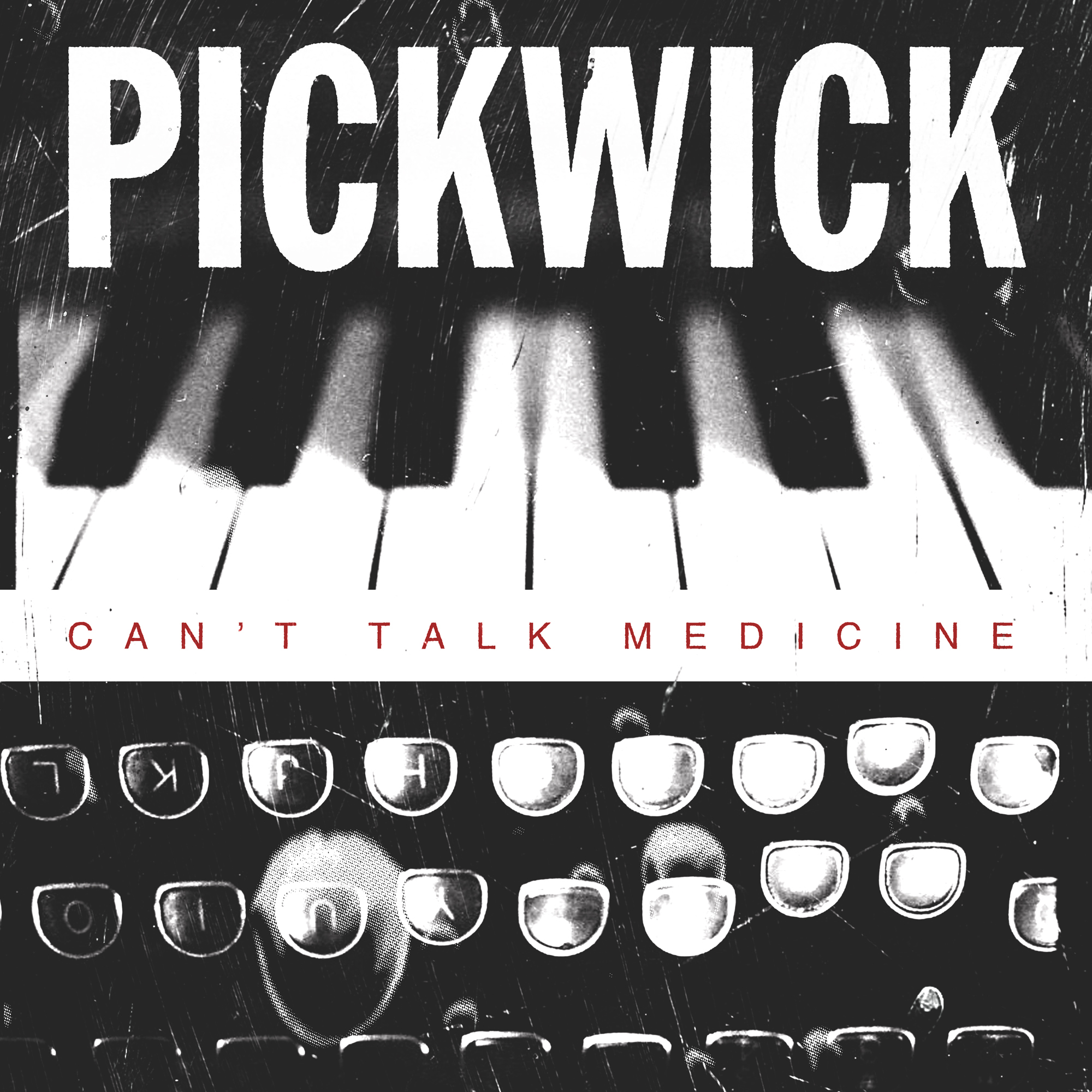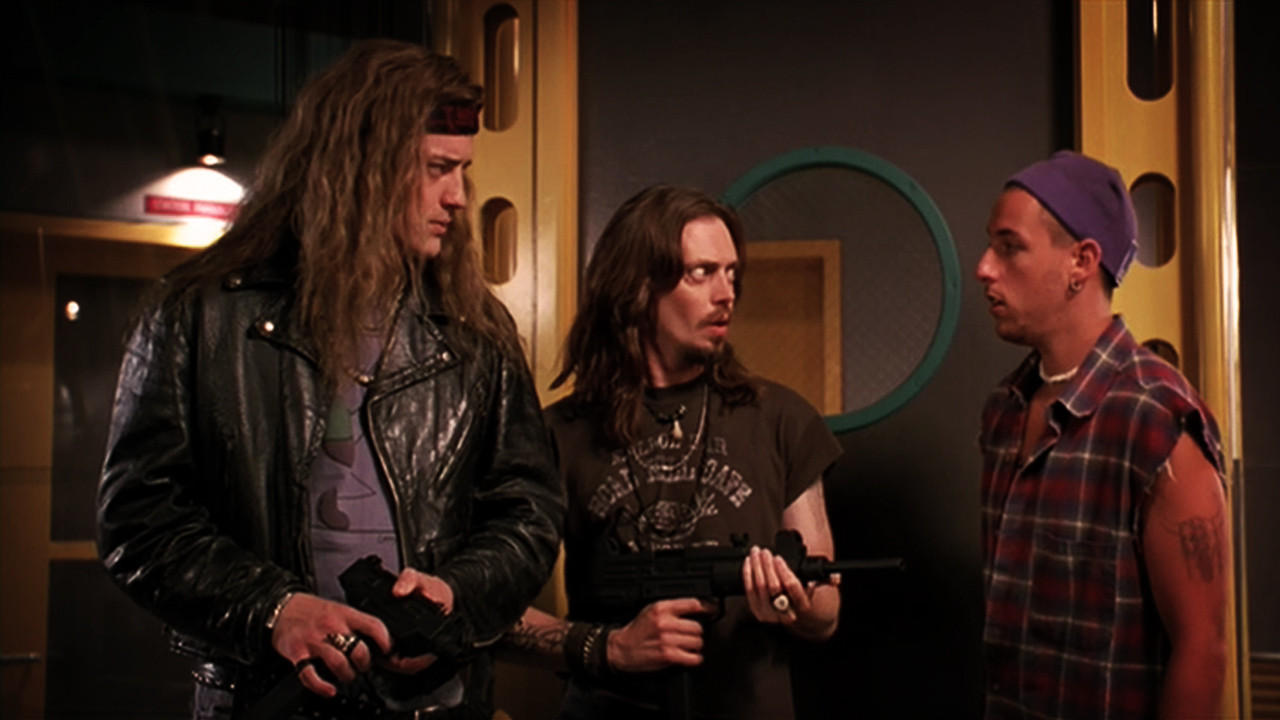With his West Seattle home studio in the midst of an overhaul, Matt Chamberlain’s temporary studio space is in Belltown, and he’s a bit apologetic about it. There are a few “kids” downing beers and pulling on cigarettes on the inside steps of the building, and a metal band is playing upstairs. But it’s not so bad; there are no crusty syringes on the floor or wrappers from Dick’s. Inside Chamberlain’s room, there’s a drum set, a computer, a synthesizer, and stacks of assorted mikes, speakers, and other accessories. When Chamberlain’s not on the road, this is his office.
Right now he’s behind his kit playing the drum part to the Wallflowers’ 1996 megahit, “One Headlight,” from their quadruple-platinum-selling Bringing Down the Horse. It’s one of the records that opened the doors to Chamberlain’s extremely successful career as a drummer for hire. He’s gone on to perform and record with everyone from bubblegum popper Christina Aguilera to his own noise-jazz trio Critters Buggin.
“Doing sessions, man, you just gotta kinda be a fan of all kinds of music and know how to get to those kinds of sounds and how to work with artists and producers. And keep centered,” he says. “Don’t let anyone psych you out. Because, you know, if you’re sitting there playing, and David Bowie’s sitting there on the couch in front of you, just kinda staring at ya, it’s easy to get kinda freaked out. You just gotta play music. Wish for the best. It’s only music.”
And it helps to have a track record. During an impressive tear in the mid-’90s, Chamberlain spit out hits for the Wallflowers, Fiona Apple (Tidal), and Macy Gray (On How Life Is). He also got tapped by Tori Amos, with whom he’s worked steadily. His phone hasn’t stopped ringing. And yes, it rang on the afternoon we met for wine, cheese, and four on the floor.
“If you’re a session musician and you play on records that do really well, people go, ‘Oh, wow, who’s this guy?’ It’s just been crazy ever since.” This fall, his drumming will be heard on Dido’s new album, Safe Trip Home, due in stores on November 3. Sarah McLachlan’s best-of set, Closer, also featuring Chamberlain, is scheduled for an Oct. 7 release.
The drum part he plays on “One Headlight” wasn’t the first idea he and the band had, he recalls. In fact, one of the first things I learn from Chamberlain is that studio work is a pragmatic process in the evolution of a song.
“You kinda don’t know what you’re getting into really, ’til you’re getting into it,” he says. “On ‘One Headlight,’ I remember the bass player was like, ‘Hey, man, do you know that Tom Petty song, “You Don’t Know How It Feels?” The drummer never hits a crash cymbal. Let’s try that.’ So for all of ‘One Headlight,’ it’s just the groove. There’s a few little fills. It was just an experiment to see if it worked. We came back and listened to it and were like, ‘Wow, that’s really cool. It worked.’ It’s that kind of deal.”
Chamberlain calls it one of the most straight-ahead rock beats there is. But when I sit down and play the same beat, it sounds nothing like his. I don’t feel too bad. Even professional drummers lose their seat in the studio when a producer doesn’t like what they’re throwing down and calls in Chamberlain.
But I’m not a lost cause yet. Or if I am, Chamberlain’s not laying that on me. He lends me some knowledge dropped on him by his first drum teacher, Tower of Power’s David Garibaldi.
One of my problems is I can’t get right the ghost notes, the sorta-heard, primarily felt patters between backbeats on the snare drum. So Chamberlain brings me back to paradiddles, one of the percussion rudiments that Garibaldi used to have him play around the kit. I haven’t played a paradiddle in years, but it comes back. His next tip: sing. What, the song? “Anything,” he tells me. “Sing the drum part. Sing the bass line.” I give it a try, and I sit back behind the kit. There’s no instant gratification, sadly. And I still can’t get the same feel as the guy standing next to me. And, full disclosure here, I’ve been practicing for years. Since Horse was released, the meat-and-potatoes drumming throughout has been among my favorite finds. And I’ve spent many hours with my kit and Walkman (more recently, my iPod) just laying down that simple beat Chamberlain plays. Still can’t get it.
“I don’t think it’s something that can be taught,” Chamberlain tells me.
Sigh.
Hear Chamberlain talk about some of the sessions that helped launch his career, as well as samples from some of his most recognizable recordings.








